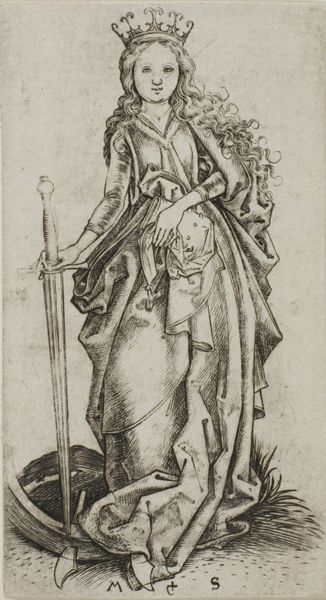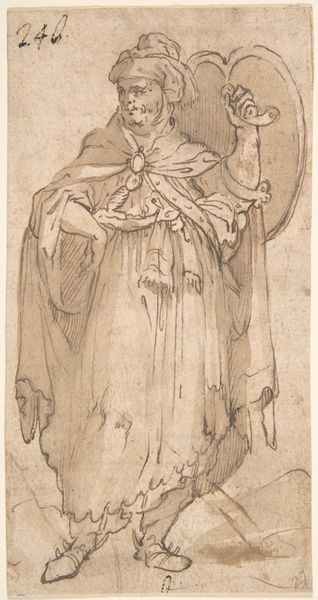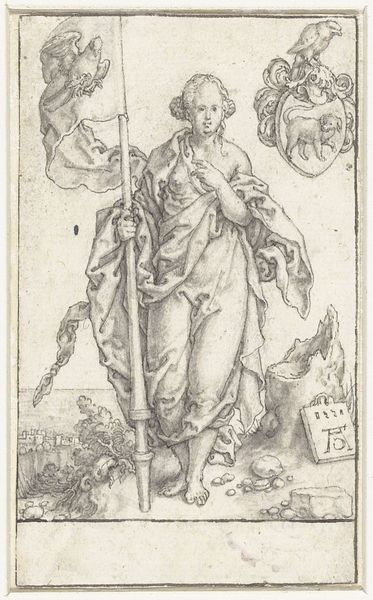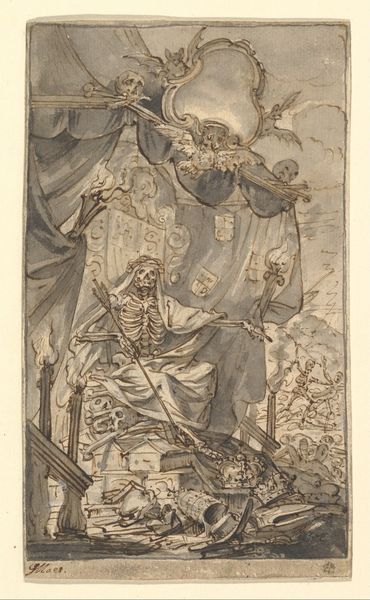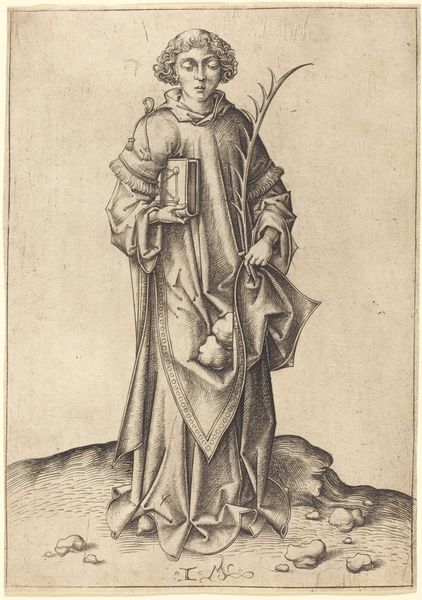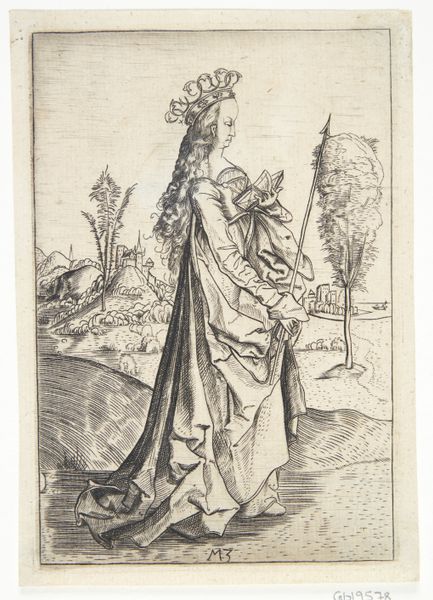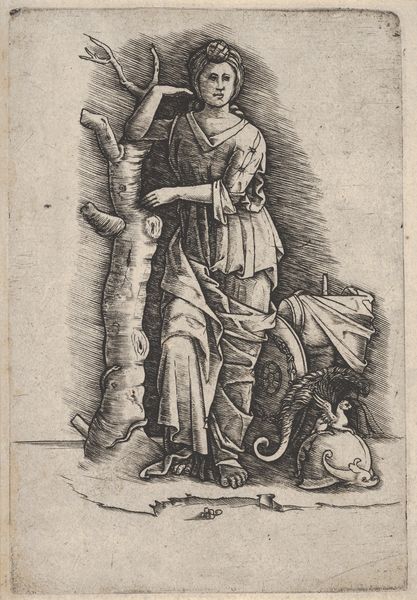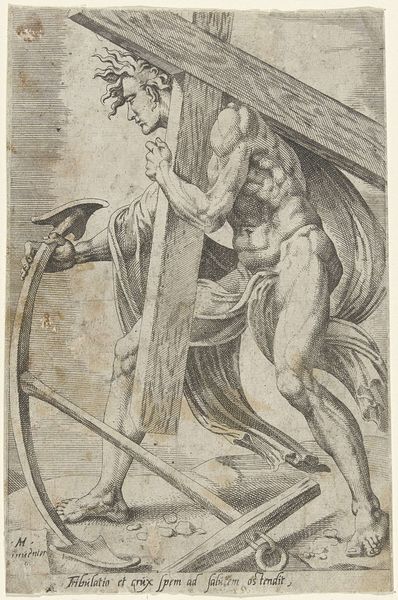
drawing, ink
#
portrait
#
drawing
#
figuration
#
11_renaissance
#
personal sketchbook
#
ink
#
history-painting
#
italian-renaissance
Copyright: Public Domain
Editor: Here we have "Saint Catherine," a drawing by Martin Kaldenbach created in 1506. It seems to be made with ink. What strikes me is the contrast between the delicate linework and the rather violent scene it depicts. What catches your eye when you look at this piece? Curator: Certainly, the linework establishes the framework for understanding. The hatching and cross-hatching create tonal variations and spatial depth. Notice how Kaldenbach employs line weight to define contours, lending weight and form to Saint Catherine and the figure beneath her. The composition draws our attention upward, from the vanquished figure and broken wheel at the base to the saint. Editor: That’s a great observation. The use of lines does bring definition and weight. But how can we determine the intended meaning or impact of the imagery? Curator: One must consider the semiotics present within the image. The sword, the wheel, and the crown – all function as symbolic signifiers within the context of Saint Catherine’s story. Her attire drapes as geometrical fields that are then countered by curvilinear lines from her hair. Ask yourself if there’s an apparent conflict, given this information, in the picture plane? Editor: I suppose that I am starting to notice more structural oppositions now that I know where to seek the conflicts out. Thanks. Curator: The Renaissance had many visual patterns; familiarity with these assists us with insight into structure. Editor: Indeed! Looking closer and thinking about the line work, it becomes clear just how much intentionality went into creating this artwork.
Comments
No comments
Be the first to comment and join the conversation on the ultimate creative platform.

